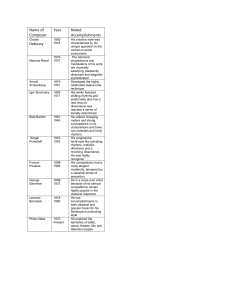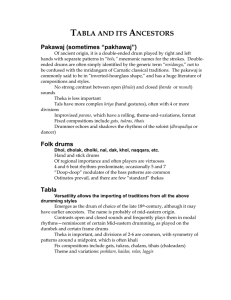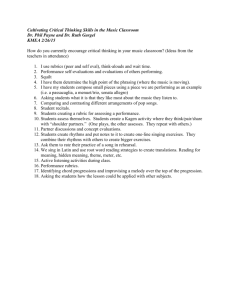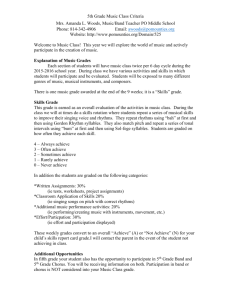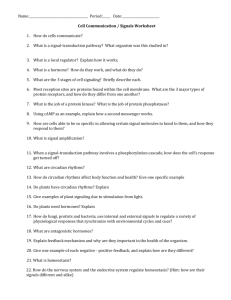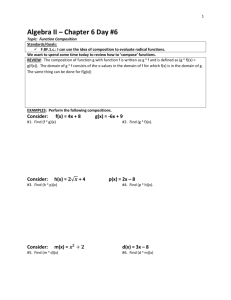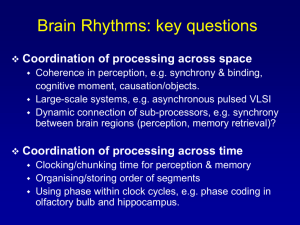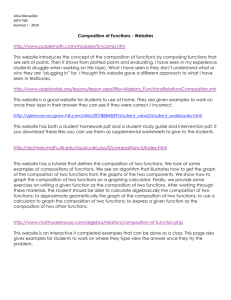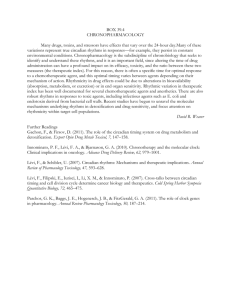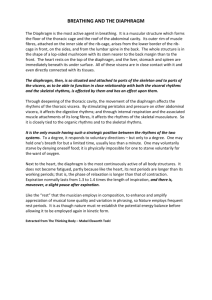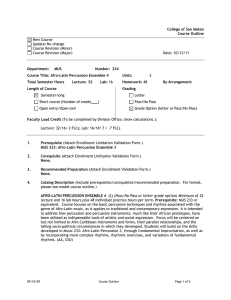Unpacking Outcomes - NESD Curriculum Corner
advertisement
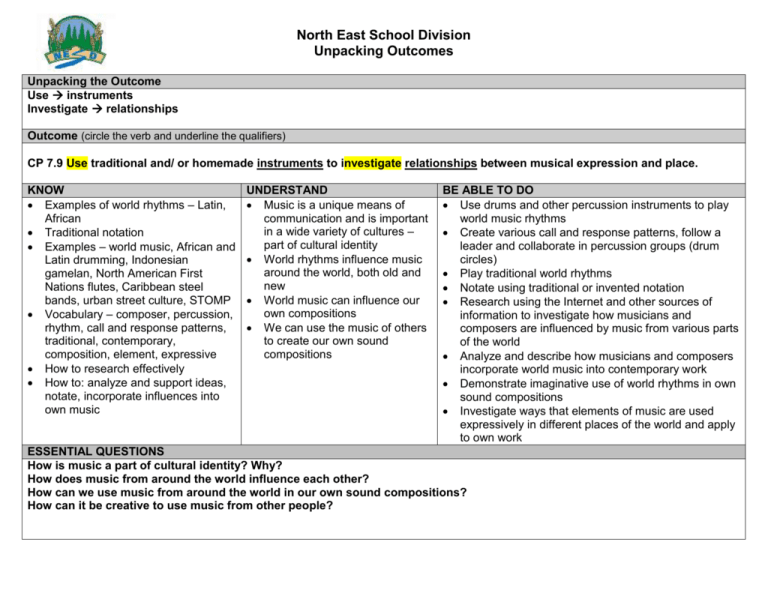
North East School Division Unpacking Outcomes Unpacking the Outcome Use instruments Investigate relationships Outcome (circle the verb and underline the qualifiers) CP 7.9 Use traditional and/ or homemade instruments to investigate relationships between musical expression and place. KNOW Examples of world rhythms – Latin, African Traditional notation Examples – world music, African and Latin drumming, Indonesian gamelan, North American First Nations flutes, Caribbean steel bands, urban street culture, STOMP Vocabulary – composer, percussion, rhythm, call and response patterns, traditional, contemporary, composition, element, expressive How to research effectively How to: analyze and support ideas, notate, incorporate influences into own music UNDERSTAND Music is a unique means of communication and is important in a wide variety of cultures – part of cultural identity World rhythms influence music around the world, both old and new World music can influence our own compositions We can use the music of others to create our own sound compositions BE ABLE TO DO Use drums and other percussion instruments to play world music rhythms Create various call and response patterns, follow a leader and collaborate in percussion groups (drum circles) Play traditional world rhythms Notate using traditional or invented notation Research using the Internet and other sources of information to investigate how musicians and composers are influenced by music from various parts of the world Analyze and describe how musicians and composers incorporate world music into contemporary work Demonstrate imaginative use of world rhythms in own sound compositions Investigate ways that elements of music are used expressively in different places of the world and apply to own work ESSENTIAL QUESTIONS How is music a part of cultural identity? Why? How does music from around the world influence each other? How can we use music from around the world in our own sound compositions? How can it be creative to use music from other people?
